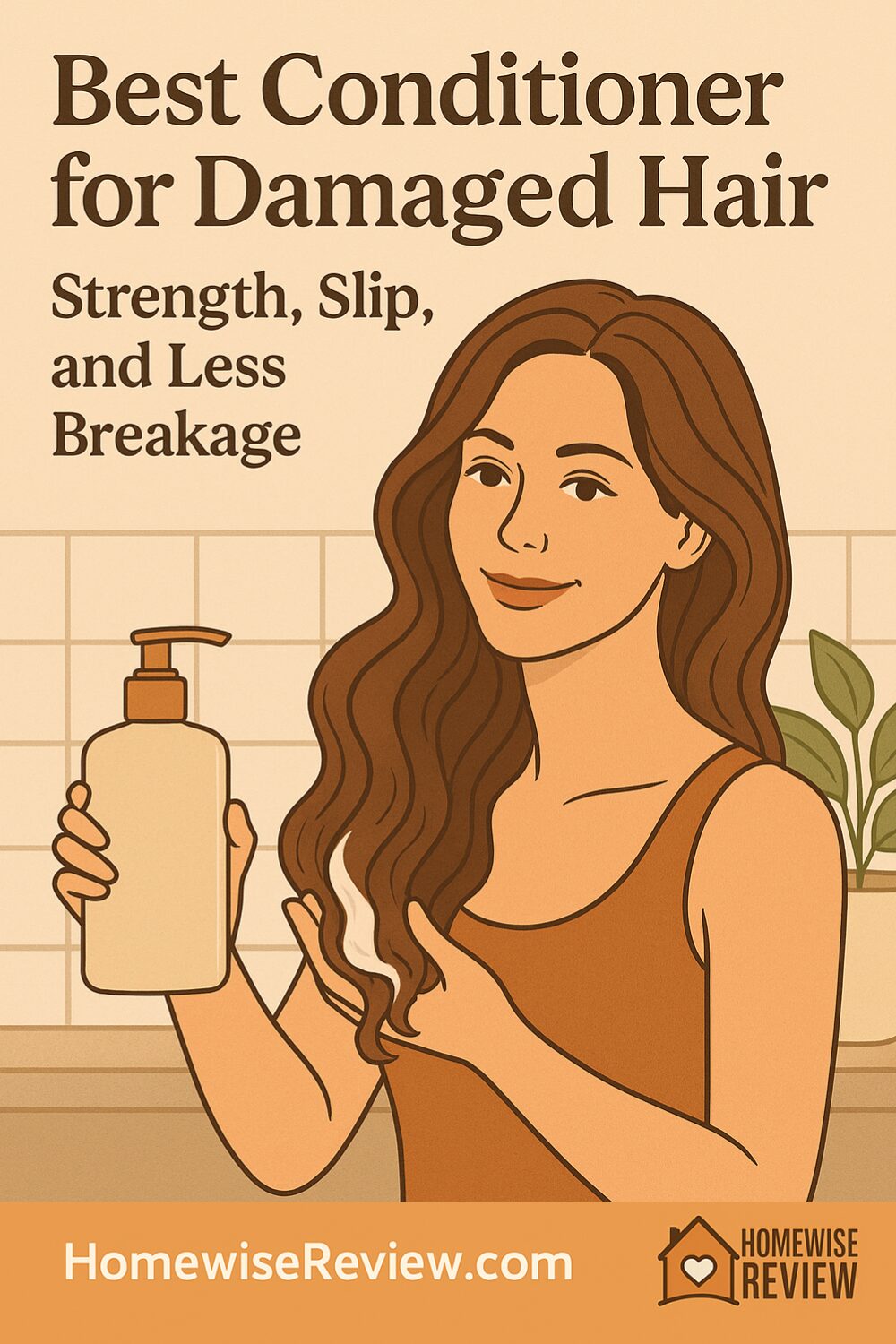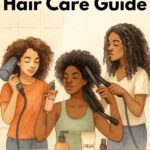
Heat tools, bleach, and everyday wear leave hair rough, porous, and prone to breakage. A good damaged-hair conditioner should do three things: cushion the cuticle for immediate slip, reduce breakage over time with bond-supporting or protein-peptide tech, and lock in moisture so hair looks smoother between washes. Below are three well-reviewed picks that cover salon-level repair, a strong drugstore option, and a weekly boost for very compromised lengths.
Disclosure: This guide may contain affiliate links. If you buy through our links, we may earn a small commission at no cost to you.
Quick picks
- Best overall: Redken Acidic Bonding Concentrate Conditioner — reparative, acidic pH to help reseal the cuticle; great slip without heaviness. Rating: 4.8/5
- Best salon-style repair (fine to medium hair): Olaplex No.5 Bond Maintenance Conditioner — bond-building support with a lighter feel than many “repair” formulas. Rating: 4.6/5
- Best budget: L’Oréal Paris Elvive Total Repair 5 Conditioner — accessible, silicone-based slip plus protein for a smoother finish. Rating: 4.5/5
Deep dives
1) Redken Acidic Bonding Concentrate Conditioner — Best overall
What it is: A reparative, low-pH conditioner designed to help re-acidify after washing, which can make the cuticle lie flatter. Includes bonding agents plus emollients for slip.
Performance & feel: Creamy slip that detangles quickly and leaves a sleeker, weight-controlled finish. Works across hair types; especially good after lightening or heat styling.
Ease of use: Use as your regular conditioner; leave on 1–4 minutes. Plays nicely with most shampoos.
Key features
- Acidic pH for a smoother finish
- Bonding complex + conditioning agents
- Color-safe
Who it’s for: Bleached, heat-styled, or high-porosity hair needing both immediate smoothness and ongoing breakage control.
Who should skip: If you’re ultra-coarse and want a buttery, heavy feel, you may prefer a deep mask once a week.
Pros
- High slip without greasiness
- Helps reduce snap during detangling
- Noticeably smoother look on porous ends
Cons
- Salon price point
- Scented
Rating: 4.8/5
2) Olaplex No.5 Bond Maintenance Conditioner — Best salon-style repair (fine–medium)
What it is: A lighter-feel bond-support conditioner that aims to maintain strength between more intensive treatments.
Performance & feel: Softens and improves elasticity over time, especially on compromised mids/ends. Leaves a cleaner finish than many heavy “repair” options, so fine to medium hair stays bouncy.
Ease of use: Daily/regular use; leave on 3 minutes. Layer a weekly mask if you’re very dry.
Key features
- Bond-maintenance tech for ongoing support
- Lightweight feel; color-safe
Who it’s for: Fine to medium damaged hair, or anyone who wants repair without a coated feel.
Who should skip: If you love a dense, buttery conditioner or have very coarse textures, you may want something richer on wash days.
Pros
- Repairs look of damage with less heaviness
- Good elasticity boost on ends
- Pairs well with heat protectants
Cons
- Pricey per ounce
- Results are better as part of a system (adds cost)
Rating: 4.6/5
3) L’Oréal Paris Elvive Total Repair 5 Conditioner — Best budget
What it is: A drugstore repair conditioner combining silicones for instant slip with protein to help the hair feel stronger.
Performance & feel: Immediately easier detangling; smoother look on rough ends. Great if you want a quick win without a salon bill.
Ease of use: Daily/regular use. If your hair is protein-sensitive, rotate with a more moisturising conditioner.
Key features
- Silicone + protein blend for slip and support
- Wallet-friendly; widely available
Who it’s for: Anyone needing a budget-friendly smooth-down that also supports breakage control.
Who should skip: Very protein-sensitive hair or those avoiding silicones entirely.
Pros
- Big improvement in comb-through at low cost
- Readily available in multipacks
- Pairs well with a weekly deep mask
Cons
- Can feel heavy on very fine roots if overused
- Protein may not suit every routine
Rating: 4.5/5
How to choose (and use)
Pick by feel and routine:
- Need immediate sleekness and durable results? Redken Acidic Bonding Concentrate.
- Want repair without weight on fine–medium hair? Olaplex No.5.
- Need a budget smooth-down with protein support? L’Oréal Elvive Total Repair 5.
Usage tips that reduce breakage
- Detangle in the shower with conditioner on the lengths; use a wide-tooth comb and work from ends upward.
- Leave on 3–5 minutes before rinsing.
- Finish with a cooler rinse to help the cuticle lie flatter.
- After washing, apply a leave-in + heat protectant before blow-drying.
- Rotate a weekly deep mask if ends still feel rough.
FAQs
Are silicones bad for damaged hair?
Not necessarily. Silicones can reduce friction and snap during detangling. If you dislike buildup, use a clarifying shampoo once every 2–4 weeks.
Bonding vs protein — do I need both?
They support different things. Bonding tech targets internal strength; proteins/peptides can temporarily fill in rough areas. Many damaged routines use both, plus moisturisers and emollients.
How long until hair looks smoother?
Slip is immediate. Breakage reduction takes 2–4 weeks of consistent use and heat protection.
Can I use a damaged-hair conditioner on the scalp?
Focus on mids to ends. If roots go limp, keep conditioner from the first 2–3 inches near the scalp.
My hair is snapping after bleach — is conditioner enough?
Start here, but add a weekly mask and always use heat protectant. Very compromised hair may need trims and professional advice.
See also
If breakage started after coloring or heat tools, pair your new conditioner with a bond-support shampoo and a weekly mask. For ideas, hop to our Best Hair Mask for Damaged Hair and check tools that protect styling days in Best Shampoo for Damaged Hair. If your ends are lifting the color or turning brassy, our Best Shampoo for Gray Hair and Best Shampoo Free of Sulfates and Parabens round out the routine with gentler washes.




